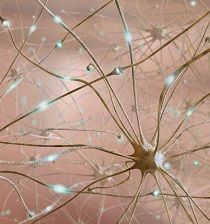Article
New Compound Could Pave the Way to Neuropathic Pain Prevention
Author(s):
The next step in reducing and preventing neuropathic pain has been identified, according to researchers from UC Davis.

Investigators have identified a compound that is activated during peripheral nerve injury in the spinal cord and claim there is a way to combat it, according to research published in The Journal of Pharmacology and Experimental Therapeutics.
Researchers from University of California Davis identified a molecule named 6-chloro-8-(glycinyl)-amino-β-carbolin, or 8-Gly carb and said that it is an important new drug target to prevent severe pain that lasts even after an injury or infection has healed.
“We have discovered a new compound that is more than 40 times more potent in inhibiting nitric oxide production than the currently used reference compound,” co principal investigator of the study Fredric Gorin, MD, PhD, professor and chair of the UC Davis Department of Neurology, said in a press release. “That makes 8-Gly carb a potentially very fruitful focus for new drug development against neuropathic pain syndromes.”
When neuropathic pain is induced in the body, inflammatory cells can release chemicals including nitric oxide, which researchers believe is a key factor in sustained inflammation linked to neuropathic pain. The researchers believe that by inhibiting nitric oxide at the time of nerve injury, it can prevent further neuropathic pain onset.
Gorin explained that 8-Gly carb belongs to a class of drug known as β-carbolines, which are a large group of both natural and synthetic organic compounds. Some of the β-carbolines are known to reduce nitric oxide production. β-carbolines such as tumor necrosis factor α and interleukin 1B (IL 1B) are known elements required for recovery, but this new research demonstrate that 8-Gly carb does not reduce levels of tumor necrosis factor α or IL 1B.
“A compound like 8-Gly carb that selectively targets nitric oxide production and does not block cytokine expression could make it a promising prototype for drug development aimed at preventing a neuropathic pain syndrome without interfering with recovery,” Gorin said. “We look forward to extending this research by developing and testing this compound and related ones in the laboratory and eventually in clinical trials.”
Future research will focus on why this new compound inhibits macrophage production of nitric oxide, the researchers said.



